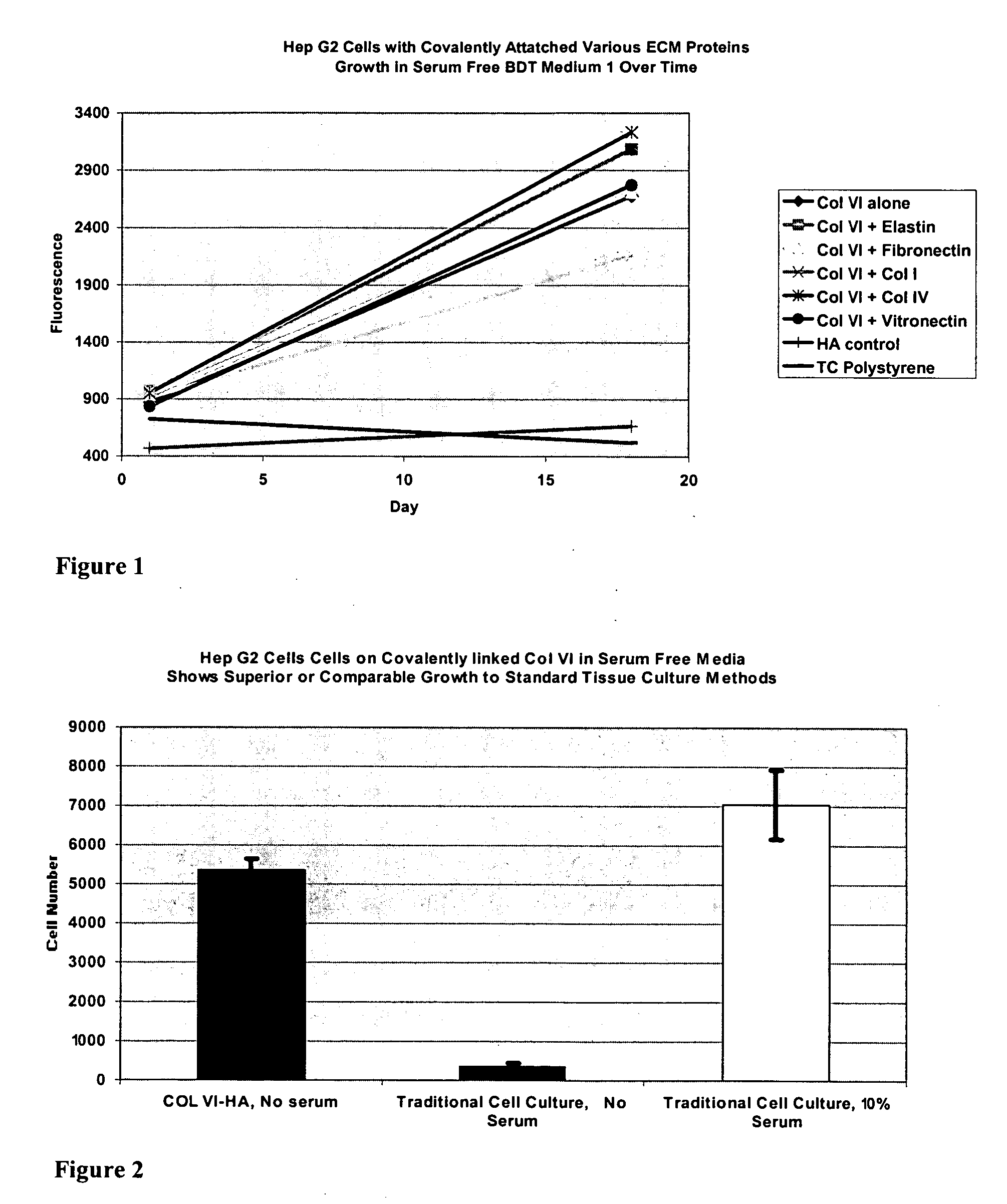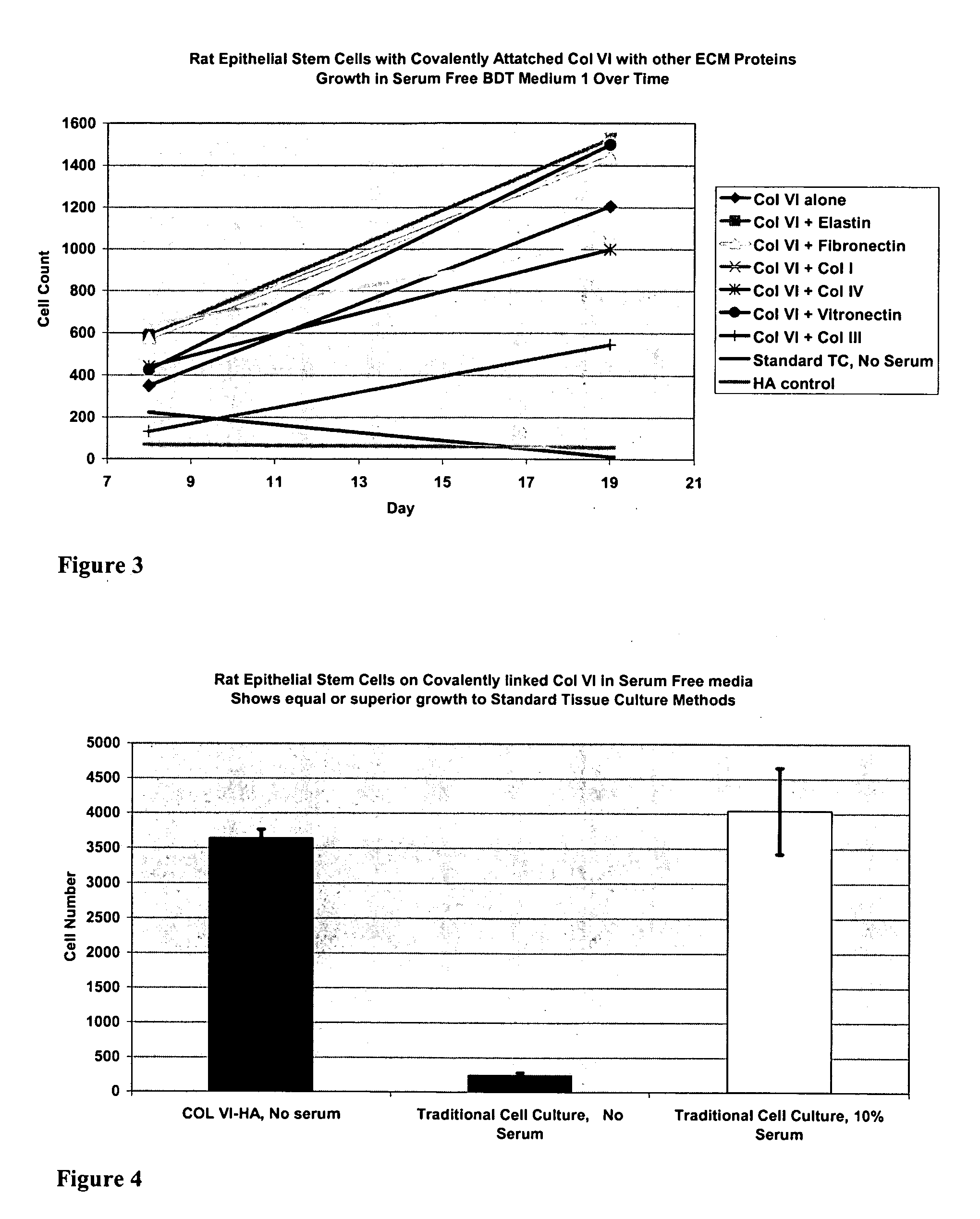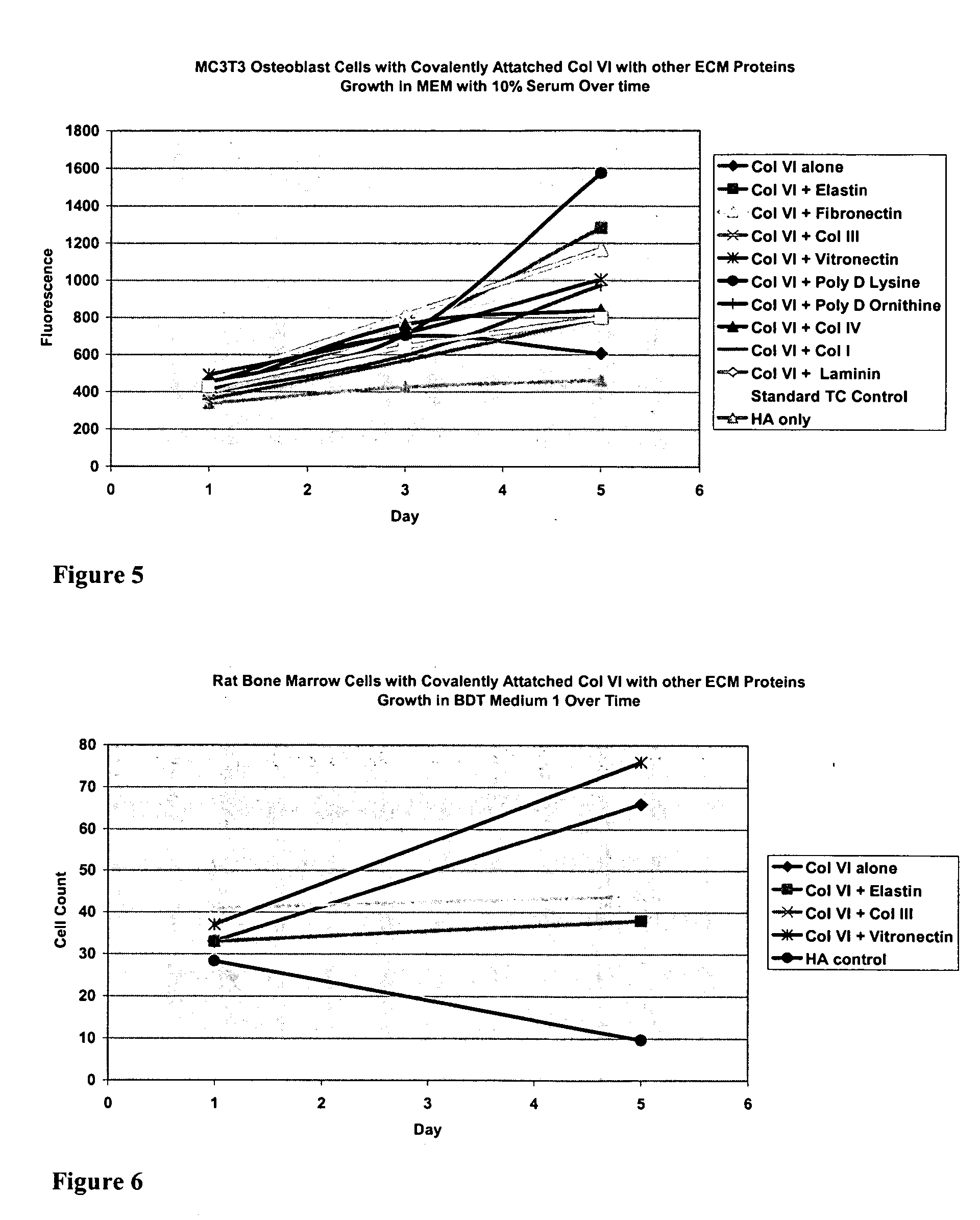Covalently attached collagen VI for cell attachment and proliferation
a collagen vi and cell technology, applied in the field of useable surfaces, can solve problems such as creating further unwanted complications
- Summary
- Abstract
- Description
- Claims
- Application Information
AI Technical Summary
Benefits of technology
Problems solved by technology
Method used
Image
Examples
example i
Attachment and Proliferation of HEP G2 Human Hepatoma Cells In Serum-Free Medium
[0070] HepG2 human hepatoma cells were grown in BD Medium #1, a serum free chemically defined medium, on surfaces comprising hyaluronic acid (HA) to which was covalently attached collagen VI, either alone or in combination with other covalently attached extracellular matrix (ECM) proteins. (The components of BD Medium #1 are summarized in Table 2.) The ECM combinations tested were: collagen VI alone, or collagen VI in combination with either elastin, fibronectin, collagen I, collagen IV or vitronectin. In control samples, cells were seeded in BD Medium # 1 onto standard tissue culture treated polystyrene.
[0071] The cells were seeded in wells of 96-well microplates at an initial density of 104 cells / well, incubated in a CO2 incubator at 37° C, and stained at the time points indicated in the figure, using propidium iodide. Fluorescence was measured with a BMG Polarstar fluorometer at excitation of 544 nm...
example ii
Comparison of Proliferation of HEP G2 Human Hepatoma Cells in Serum-Free Medium to Commercial Media
[0072] HepG2 human hepatoma cells were grown as described in Example I, except the only ECM covalently bound to the HA surface was collagen VI. Proliferation of the cells on this collagen VI-surface in BD Medium #1 was compared to proliferation under the standard tissue culture conditions, either with or without serum. The cell number after 5 days of culture is shown graphically in FIG. 2.
[0073] The cells were stained with propidium iodide. Fluorescence microscopy images were obtained on an HT Imager (Discovery-1, Universal Imaging Corporation, a subsidiary of Molecular Devices, Downington, Pa.) at excitation of 535 nm and emission of 700 nm. Cell numbers were determined from these fluorescence microscopy images using UIC Metamorph™ analysis software. FIG. 2 shows that collagen VI combined with serum free BD Medium #1 promoted the proliferation of Hep G2 cells to the same extent as t...
example iii
Attachment and Proliferation of Rat Epithelial Stem Cells in Serum-Free Medium
[0074] Rat epithelial stem cells (passage 6) were grown in BD Medium #1 on surfaces comprising hyaluronic acid (HA) to which was covalently attached collagen VI alone, or in combination with either elastin, fibronectin, collagen I, collagen IV vitronectin, or collagen III. Control samples were (1) cultured under “standard tissue culture conditions,” which comprised seeding cells onto tissue culture PS plates using commercial medium (DMEM / F12 mixed 1:1), or (2) cultured on a hyaluronic acid (HA) surface with no extracellular matrix protein present in BD Medium #1. The cells were stained with propidium iodide and analyzed as described in Example II. The proliferation over time was assayed.
[0075] As shown in FIG. 3, the number of cells on the collagen VI surfaces increased between day 8 and day 19. The proliferation in BD Medium #1 on the surfaces comprising collagen VI was superior to proliferation in comm...
PUM
| Property | Measurement | Unit |
|---|---|---|
| cell adhesion resistant | aaaaa | aaaaa |
| adhesion resistant | aaaaa | aaaaa |
| conformational states | aaaaa | aaaaa |
Abstract
Description
Claims
Application Information
 Login to View More
Login to View More - R&D
- Intellectual Property
- Life Sciences
- Materials
- Tech Scout
- Unparalleled Data Quality
- Higher Quality Content
- 60% Fewer Hallucinations
Browse by: Latest US Patents, China's latest patents, Technical Efficacy Thesaurus, Application Domain, Technology Topic, Popular Technical Reports.
© 2025 PatSnap. All rights reserved.Legal|Privacy policy|Modern Slavery Act Transparency Statement|Sitemap|About US| Contact US: help@patsnap.com



